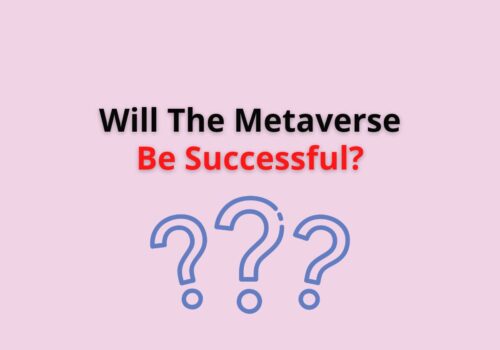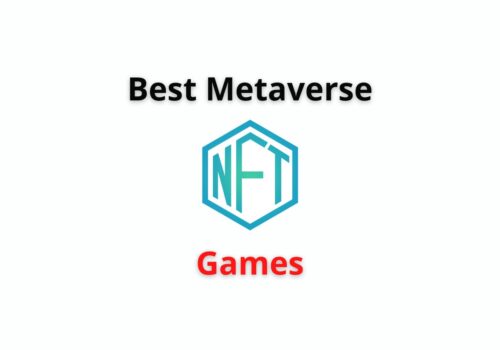As a result of new and innovative technological interventions every day, the world around us is changing at an accelerated pace. It was difficult to communicate decades ago, and people used bulky telephones to talk with their friends and family.
The internet-enabled the world to access many services, like email and social media, simplifying communication.
If you think the impact of technology is limited only to how we communicate and get information, you need to explore the concepts of metaverse and multiverse. Imagine accessing your computer as a virtual world that surrounds you instead of just a collection of pages on your screen.
The concept of the Metaverse has also promised this, while the Multiverse concept has become a distinctly noteworthy feature.
What Is Metaverse Real Estate?
Metaverse real estate can be explained as owning a digital land on Metaverse platforms such as Sandbox, Decentraland, etc. It is now possible to buy digital land in the Metaverse if you have enough money and courage.
Investors flock to the Metaverse, an immersive virtual world where they can buy and sell products in real-time and via avatars.
Investments in real estate in the metaverse are highly speculative. It is crucial to believe that the platform will exist far enough into the future for you to cash out your investment.
Virtual real estate is not as helpful to people as real estate in the real world. No one relies on it for a roof over their heads, crops to grow, or even a place to set up a business.
It is simply not necessary in the same sense as the Earth is necessary for us. While individual Metaverse platforms have caps on how many plots are available, new platforms are constantly popping up, creating a system where people can choose from unlimited options.
Differences Between Metaverse And Multiverse
In the future, we may have a completely connected virtual world referred to as the metaverse. It would be possible for users to seamlessly move between different Metaverse spaces based on their preferences.
The Multiverse, on the other hand, is composed of many disconnected virtual worlds.
Users are not able to seamlessly move between the different digital ecosystems in the multiverse. This resulted in the Multiverse being unable to deliver a unified user experience.
Contrary to this, the Multiverse offers different virtual worlds, including video gaming environments, social environments, and virtual work environments.
There are, however, differences between all the worlds in the Multiverse, so they do not communicate with each other.
Take a look at the differences between Multiverse and Metaverse in light of various critical factors.
| Criteria | Metaverse | Multiverse |
| Number of Ecosystems | Metaverse consists of one shared universe where users can interact seamlessly across platforms. | In Multiverse, multiple virtual worlds create multiple ecosystems in the same pool of information. |
| Connection | Metaverse connections are highly ordered according to a particular flow of information. | Multiverses are highly random and contain disparate virtual worlds without any set order in which information flows. |
| Property | It would be possible for users to own their assets and experiences within the metaverse. | There was no way for users to own assets in the separate multiverse virtual world. |
| Entities | The metaverse includes various entities such as robots, artificial intelligence, and human participants. | Virtual worlds are the only entities that make up the multiverse. |
1. Number Of Ecosystems
One of the most popular misconceptions about the difference between the Metaverse and the Multiverse is that they feature various ecosystems.
This is not the case. You must, however, take a step back and carefully examine both notions to understand the distinction. In the case of the Multiverse, there exists an endless number of ecosystems that are not connected.
On the other hand, the Metaverse is a digital realm where you may seamlessly hop between different experiences, games, and events without losing your place.
Using your computer or augmented reality technologies such as Google Glass, you may effortlessly access the metaverse and have a unified experience with other people.
As a result, it is easy to see that the comparison of the Multiverse and the Metaverse reveals that the multiverse has different ecosystems that are spread individually.
In contrast to the hypothetical collection of various virtual worlds or universes, the Metaverse provides a unified ecosystem.
In the Metaverse, you may collaborate with your friends to produce assets, play games, or watch movies, and you can transfer your experiences across other platforms inside the same universe as well.
2. Connection
The relationship between the components of the Metaverse and the components of the multiverse would be the next significant point of distinction between the two.
In reality, the relationship between the Multiverse components and the Metaverse demonstrates the extent to which both order and randomness exist in the universe.
In the case of the Multiverse, it would be difficult to discern any kind of definite order because the multiple universes are kept isolated from one another.
The virtual worlds that exist in a multiverse have distinct characteristics and never interact. As a result, you are likely to meet high degrees of unpredictability and chance in the Multiverse.
On the other hand, the Metaverse provides a significant boost to order through the use of a single universe, which is extremely convenient.
You could see the distinction between the connections between different components in the Metaverse and between different components in the Multiverse.
The entire Metaverse is interconnected somehow, and a certain sequence of events dictates the flow of information via the network.
3. Property
A closer examination of the probable differences between a Multiverse and a Metaverse comparison would undoubtedly introduce the concept of ownership into the discussion.
The Multiverse comprises a collection of virtual worlds that are all distinct from one another.
These worlds are most commonly found in online games owned by a single entity, such as Facebook.
Therefore, the game development business owns your data, assets, and experiences due to your participation.
Even while you can produce or acquire new assets in many worlds around the universe, you will not extract the desired value from them.
Take, for example, the fact that you couldn’t utilize the in-game treasures you gained from one game to purchase supplies in another game.
When it comes to this element of the comparisons between the Metaverse and the Multiverse, the metaverse provides a more positive perspective.
Users get complete ownership and control over their assets when they use the metaverse to store them. Using NFT avatars, Metaverse members can link their virtual identities to their real-world identities.
In addition, participants receive entire ownership of the NFTs or assets that they generate in the Metaverse throughout their participation.
Participants in the metaverse were free to exchange their assets on other platforms in the Metaverse without encountering any difficulties.
4. Entities
The components found in the Metaverse and Multiverse serve as another eye-catching example of the distinctions between the two universes.
When you think about the multiverse, it is exceedingly unlikely that you would come across particular components responsible for creating the universe.
The Multiverse is a massive collection of virtual worlds that are all distinct from one another in terms of their attributes, features, and individual elements, as well as their location in space.
As a result, it is extremely difficult to form a clear picture of which components contribute to the overall power of the Multiverse. As elements of the Multiverse, you only have different virtual worlds to choose from.
On the other hand, the Metaverse is the other actor in the argument between the Multiverse and the Metaverse.
The Metaverse contains a variety of beings, each with its own set of skills. It’s interesting to note that the creatures or components in the Metaverse include humans, robots, artificial intelligence, and various other things.
In the Metaverse, each of these entities has a unique role, which adds to the complexity of the experience.
Conclusion
The highlights of comparison show that there is a noticeable difference between the Metaverse and Multiverse.
Metaverse is conceptual ideas that pave the way for a future in which we have a totally connected virtual world.
On the other hand, Multiverse provides the opportunity for multiple digital ecosystems to exist.
When comparing metaverse vs multiverse, metaverse comes out on top due to its unified user experience.
Can the Multiverse expand beyond what it is now? Metaverse continues to develop, as evidenced by the answer to the question. A large number of functional virtual worlds are already available in the multiverse that addresses real-world needs.




